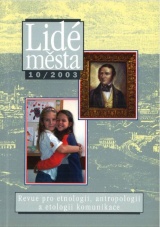Česká menšinová muzea
DOI:
https://doi.org/10.14712/12128112.4277Abstrakt
Czech minority museums were a typical product of the contemporary situation of the inter-war Czechoslovakia. They were mostly established in the towns of northern and northwestern Bohemia, where a local museum already existed, but it did not describe historical and cultural traditions of Czech life. The Czech ethnic museums were a product of a spontaneous activity and personal efforts of teachers in particular. The Association of Czechoslovak Museums could not prevent these tendencies. When their program was formed, it stressed the word "museum" and not "ethnic." It called the activities of ethnic rnuseums as rightful ancl useful frorn the museum point of view since it helped preserve cultural values ancl allowed thorough knowledge of the region also from the aspects which were ignored by German museums. Collaboration with German museums was minimal. If it really occurred, it related to personal, not institutional, contacts. Czech minority museums were being established in the 1920-1930s as a reaction of the Czech minority to its position in the border regions of Bohemia. They were devised to document the life of the Czech population. The documentation of other spheres of life was taking place in parallel with German museums. The activity of Czech minority museums ended with the Munich Accord in 1938 and occupation of Czechoslovak border regions by Germany. After 1945, the museums were not renewed, they were merged with the former German museums and went under the Czech administration. Their existence in the 1920s and 1930s is one of the less examined chapters of the life of ethnic Czechs in the border region.
Stahování
Publikováno
Jak citovat
Číslo
Sekce
Licence

Tato práce je licencována pod Mezinárodní licencí Creative Commons Attribution-NonCommercial-NoDerivatives 4.0.


